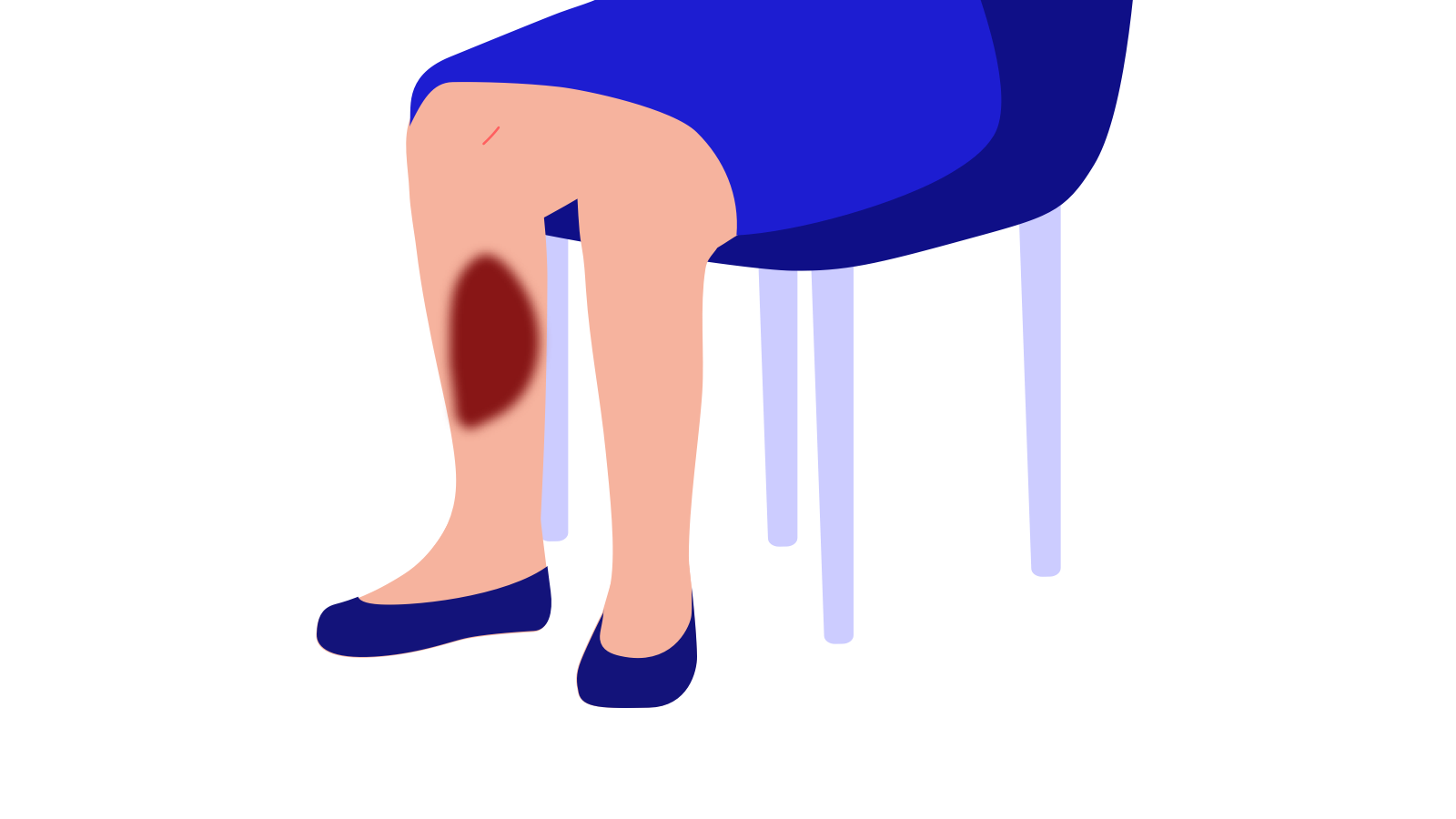Recognising the signs and symptoms of a DVT
Some people with DVT do not experience any signs or symptoms. If you do have signs or symptoms, they may start suddenly, or they may appear slowly over days and weeks.

The most common signs and symptoms of a DVT are:1,2
- a cramp-like pain or soreness, often in the calf
- swelling, usually affecting only one leg
- red or discoloured skin that may feel warm to touch
DVTs can be difficult to diagnose, as the signs and symptoms are non-specific and are similar to those of muscle pain or soreness from a cramp or muscle strain. However, if this cramp-like pain is accompanied by swelling, warmth or a change in skin colour, it is likely to be a DVT.3
If untreated, a DVT may lead to a PE1,3
If you suspect someone may have a DVT, or you or someone else notice any or all of these signs or symptoms, you should contact a doctor.
Recognising the signs and symptoms of a PE4
A PE is a serious condition that can potentially be life-threatening – so it needs immediate medical treatment.

There are several warning signs or symptoms of a PE, including:1,4-7
- Chest pain or discomfort that becomes worse if the person coughs or takes a deep breath If you are having chest pain or breathing difficulties, please visit your doctor immediately as it may be a medical emergency
- Sudden shortness of breath
- Coughing up blood
- Rapid heartbeat
- Light-headedness, dizziness, or fainting
- Fever, sweating and / or clammy skin
As PE is usually a complication of a DVT, you may also have some of the signs or symptoms of a DVT.
However, you should also be aware that some people may not have any signs or symptoms.7 If you are concerned, it is always best to consult a doctor.
Speak to your doctor about your signs and symptoms
If you – or someone else – experience any of the signs or symptoms described above, it is important to speak to your doctor immediately.4–7 They will be able to offer advice, confirm whether or not it is a PE and arrange treatment, if necessary.
If in doubt, ask a doctor
Both DVT and PE have the potential to be serious – however, they can be treated.3
If you have any questions or concerns, please speak to your doctor.
Here are some questions you might want to ask your healthcare team:
- What should I do if I think someone has a DVT?
- What should I do if someone is experiencing breathing difficulties?
- How can I tell whether the chest pain is a PE?
- My left leg is swollen and sore but not red. Is it a DVT?
- I have recently had an operation. What can I do to reduce my risk of developing a DVT or PE?